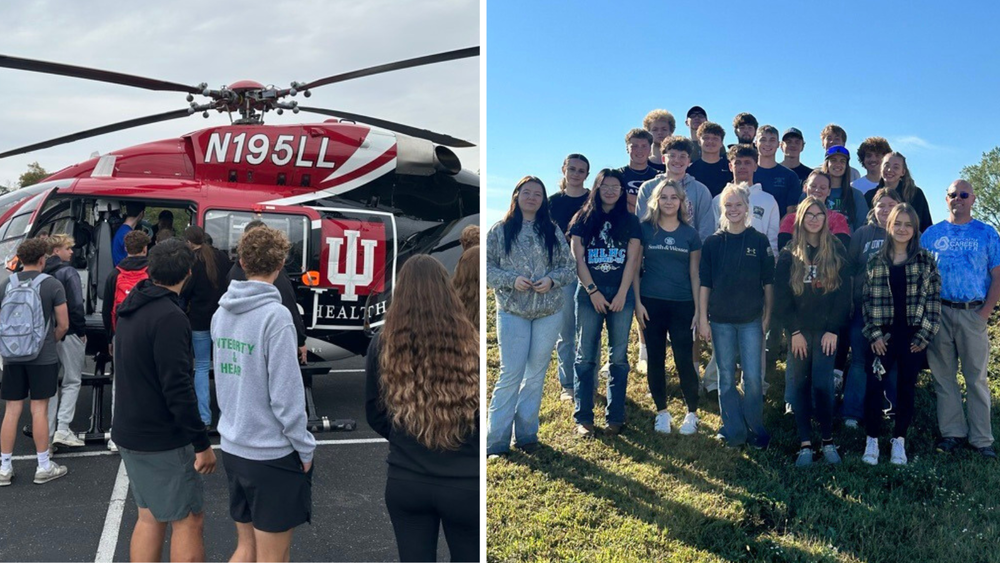Students in the Emergency Medical Technician (EMT) and Criminal Justice programs at the New Castle Career Center (NCCC) experienced a once-in-a-lifetime opportunity when an IU Health Lifeline helicopter landed right on campus. The demonstration gave students an up-close look at emergency medical transport operations and a chance to learn directly from professionals who respond to critical care situations every day.
It was an incredible experience for students to see an emergency response in action. To make this happen, Fire/Rescue and EMT Instructor Tim Welch contacted IU Health Lifeline directly. “We reached out to the Northern Indiana Lifeline Regional Manager and got the ball rolling. After a few emails, we had a date set,” Welch explained.
Lessons in Emergency Response
The visit offered insight into the complexities of air medical services. “The students learned a lot about critical care and landing zones,” Welch said. They also gained a deeper understanding of the importance of scene management and proper communication in emergency response fields.
During the demonstration, the Lifeline crew shared details about safety and coordination between air and ground teams. “The crew spoke in depth about the importance of safe landing zones. They discussed the use of lighting and night vision for the helicopter operations and landing,” he added.
“The crew mentioned several times the importance of scene management and proper communication between the ground crew and the Lifeline crew,” Welch noted. These lessons are crucial for anyone entering the field of emergency response.
Students Inspired by Lifeline's Mission
The visit also left a lasting impact on students, many of whom started imagining their own futures in emergency medicine. “Several of the students were inspired by the crew and the presence of the helicopter,” said Welch. “They were discussing afterwards the importance of furthering their education to accomplish such a prestigious position.”
The Lifeline crew shared the career paths and training needed for flight positions. “The career path for employment was discussed, and the students had many questions to go along with the information,” Welch said. For emergency medical transport operations, students will need a nursing degree with 3–5 years of ER experience, and to become a paramedic, they will need 3–5 years of experience in a 911 service.
A Memorable Field Experience for Students
Before the visit, Welch prepared students for what they would see. “During class, we discussed how useful the helicopter is during serious emergencies. Once Lifeline arrives on scene, you have the experts in the field to help out,” he explained.
The experience brought classroom lessons to life in a powerful way. “Finally, the students got to see actual first responders during their daily routine,” Welch said. “They experienced the excitement the crews shared about serious and exciting calls and the possible great outcomes of a job well done.”
The Lifeline helicopter visit not only gave students a close look at emergency medical operations but also deepened their appreciation for the teamwork, skill, and dedication of public safety professionals.

